bertold stallmach
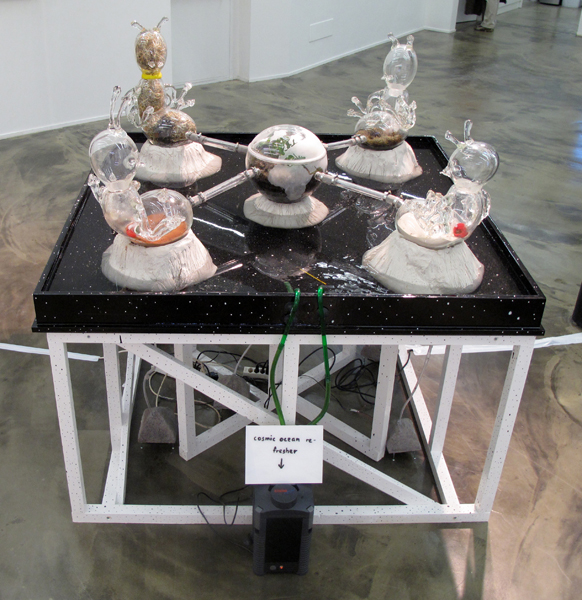
Bertold Stallmach: four temperaments, meditating, 2010
Installation view
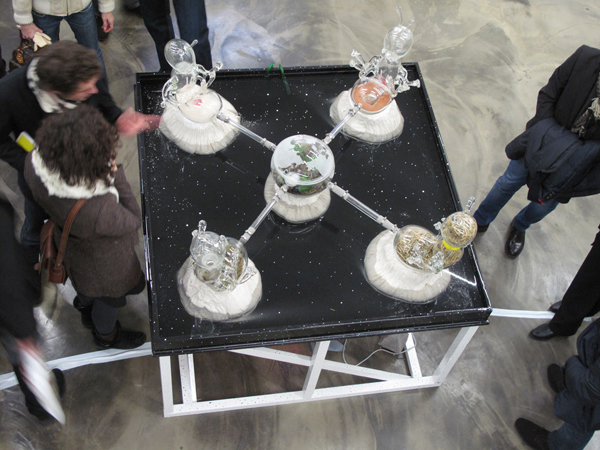
Bertold Stallmach: four temperaments, meditating, 2010
Installation view from above

Bertold Stallmach: four temperaments, meditating, 2010
Detail, the globe

Bertold Stallmach: four temperaments, meditating, 2010
Detail, air conditioning device
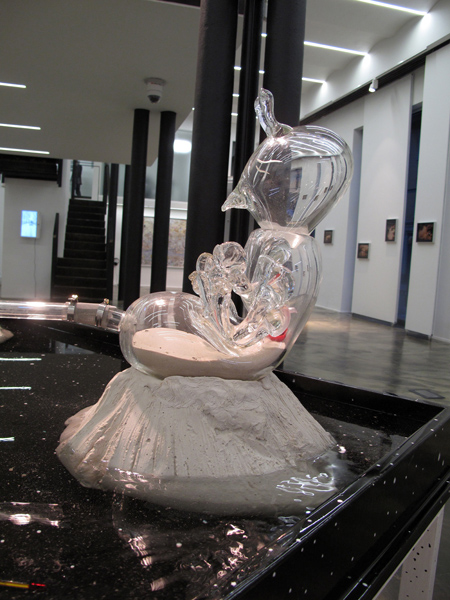
Bertold Stallmach: four temperaments, meditating, 2010
Detail, ant
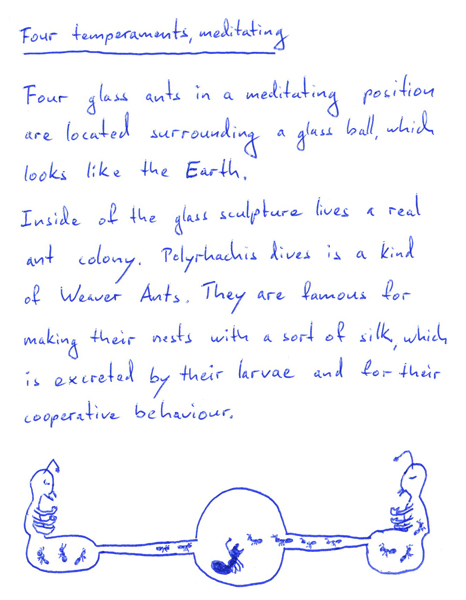
Bertold Stallmach: four temperaments, meditating, 2010
Concept paper
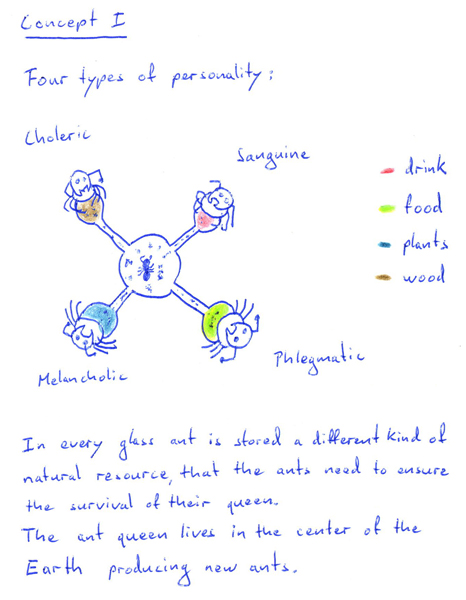
Bertold Stallmach: four temperaments, meditating, 2010
Concept paper
The installation “four temperaments, meditating” and the animation movie “Hugo and the war fart”
The first inspiration for this piece of work came with a newspaper article about the collective intelligence of ants. I watched a documentary film, all the tunnels below an anthill were filled with cement and then excavated to show the architecture of the anthill. I was very impressed, because it looked so clever in design that one might think there must have been one mind who had planned the construction to meet the needs of the ant society in the most convenient way. Probably there is no planning mind in an ant hill, but a mechanism, which automatically makes everything come out well.
This is a phenomenon which is used in the field of new artificial intelligence. Many simple and interacting machines fulfill complex tasks. For example: robots, built just to navigate in space following their peers, clean up a room as a side effect. In our human life, we can also observe many beautiful things which are the side effect of someone else trying to have a nice life.
The fascination for this phenomenon was the basis for the animation movie. In the ant society, nobody has got a clue of the consequences of their behaviour, they just behave in some way and seen from a distance, everything makes sense. To make it more simple for the animation movie, it is only one ant Hugo, whose behaviour has great influence on the ant population. He is the ruler, without knowing it. At the same time the anthill is compared to a human body, where every organ fulfills its tasks without knowing the consequences and through the interaction of all those organs, some action appears. Like within the anthill, it is very hard to tell where is the point of control or decision inside a human being.
For the installation I mixed three concepts. 1. the concept of collective intelligence merging many individuals into one superorganism. 2. the concept of cashimir shivaism, where all things are one, and one can break through the illusion of separation using meditation. 3. the four temperaments theory about the four types of personality: choleric, melancholic, phlegmatic and sanguine.
There is a glass globe in the middle of the installation. The globe is connected to four surrounding glass ants in a meditating position. Real ants (Polyrhachis dives) live inside the installation. The queen sits in the middle of the glass earth. The antworkers have to find the various materials to feed the queen inside the four surrounding glass ants, which represent the four types of personality: choleric, melancholic, phlegmatic and sanguine.
The glass ants and the globe sit on islands in a water basin. The basin is painted black with white stars. The water is kept clean and well tempered by a machine called “cosmic ocean refresher” usually used for fish keeping.
As a child already Bertold Stallmach (*1984 in Lesotho, lives in Zürich) was busy making elaborate installations. One of those on a street, which led to one of his cows, named Ruth, just the one with a name and which gave the most milk, being hit by a car. From then on he dedicated his time to manufacturing vehicles for self-transport and transport of others. The highlight and endpoint of this phase was a plane, without title, which three times in a row, minutes after a month-long repair cycle, broke again.
For four years, disheartened by this annoyance, Bertold Stallmach did nothing. Then he started painting. At the Zurich University of the Arts he learned animation with Flash, After Effects and Cinema 4d. With these programs he has made 5 animation films so far, of 10 to 30 minutes length. When Bertold Stallmach makes an exhibition he also builds sculptures and installations. One with mice, the other with ants… What he likes is the fact that when you watch a sculpture with animals inside it will not become boring. Besides, the animals allow you to animate the sculpture and to execute a process in time. Just like computer programs allow you to move an image and put it in temporal and causal relation with other images. This is very important to Bertold Stallmach, since he loves the narrative moment.